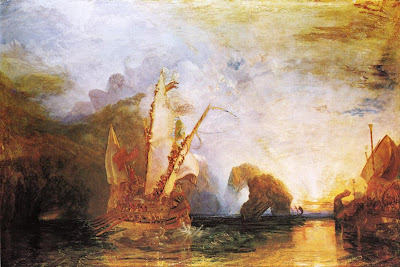 He was a French Impressionist. The name of this piece is Le pont de l’Europe. I have done some studying of the French Impressionist, the movement, the historical context of the art and the artists living in that period and have chosen Gustave Caillebotte today, not because he was known to me, but rather because he was relatively unknown to me. His style was lsightly more realistic than his counterparts like Monet and Renoir. From what I have quickly researched, Caillebotte had interests in photography and this possibly influenced his style more than the other in the movement. This piece is a genre piece which reminds me a bit of the works of Norman Rockwell and depicts a dog and people on the street going about their business. The points of interest in this piece for me are the use of one point perspective and the repeating geometric pattern created by the bridge rafters and railings. Another point of note is the use of purple shadows which was commonly used by the Impressionist painters. Some Impressionists also used straight black on their palette which seems to be an ongoing debate as to whether to use black or not, but my guess would be that the darks of the walking couple’s clothing were actually created with black rather than a neutralized dark value mixture.
He was a French Impressionist. The name of this piece is Le pont de l’Europe. I have done some studying of the French Impressionist, the movement, the historical context of the art and the artists living in that period and have chosen Gustave Caillebotte today, not because he was known to me, but rather because he was relatively unknown to me. His style was lsightly more realistic than his counterparts like Monet and Renoir. From what I have quickly researched, Caillebotte had interests in photography and this possibly influenced his style more than the other in the movement. This piece is a genre piece which reminds me a bit of the works of Norman Rockwell and depicts a dog and people on the street going about their business. The points of interest in this piece for me are the use of one point perspective and the repeating geometric pattern created by the bridge rafters and railings. Another point of note is the use of purple shadows which was commonly used by the Impressionist painters. Some Impressionists also used straight black on their palette which seems to be an ongoing debate as to whether to use black or not, but my guess would be that the darks of the walking couple’s clothing were actually created with black rather than a neutralized dark value mixture.
Would I hang this piece on my wall? No. But it is a strong example of the shift from romanticized narrative images to that of creating images of everyday life during this period.




